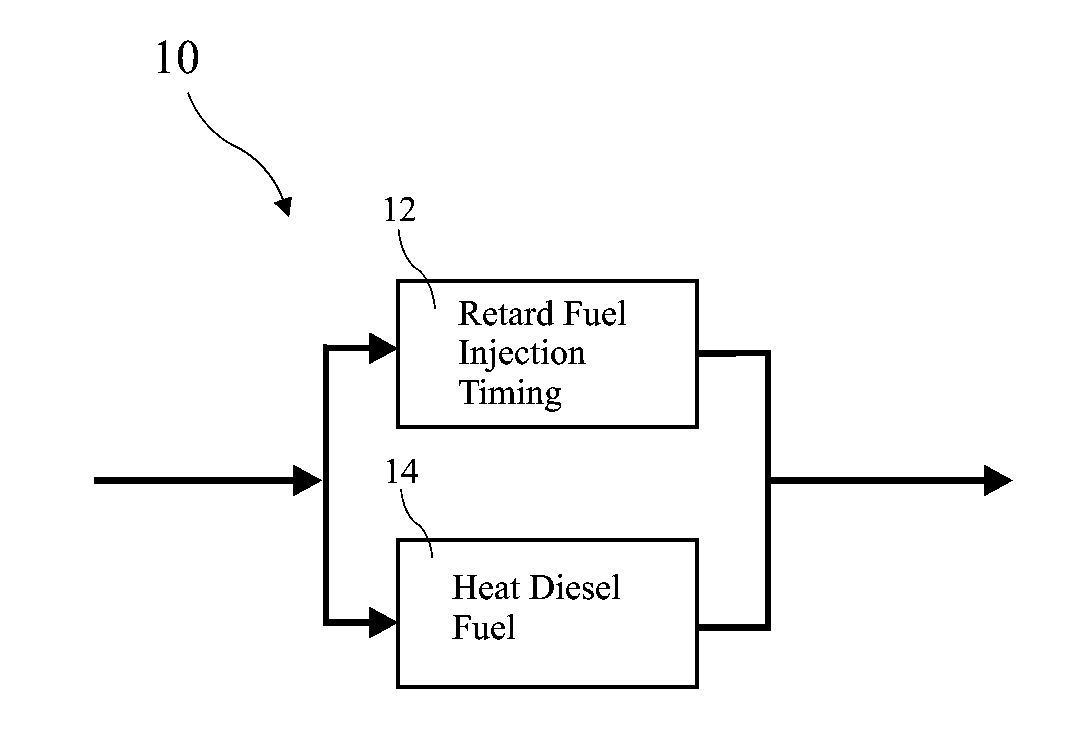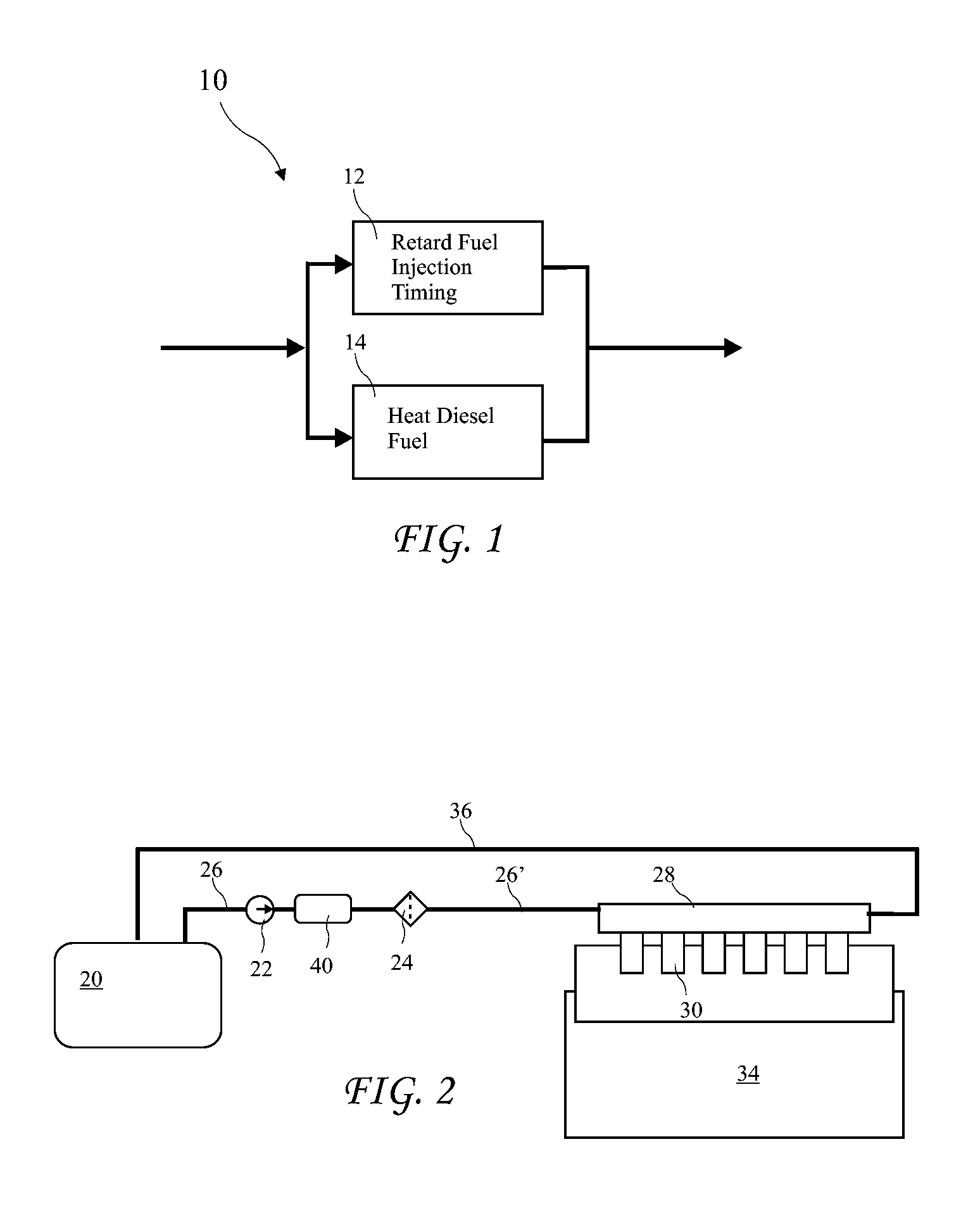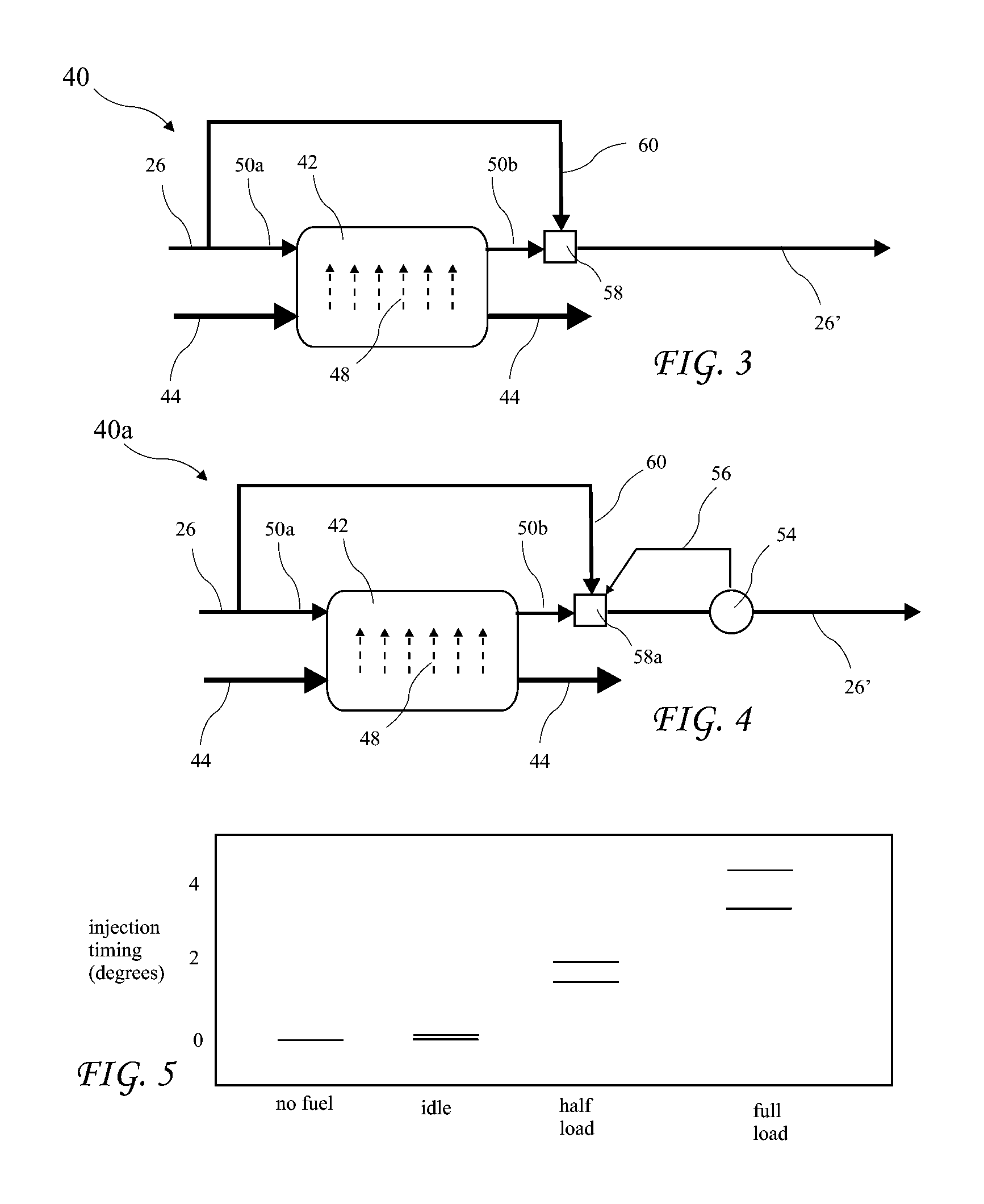Tug Boat Engine Emissions Control Suite
a technology for engine emissions and control suites, which is applied in the direction of electric control, machines/engines, fuel injecting pumps, etc., can solve the problems of increasing nox emissions, increasing increasing emissions of carbon monoxide (co), and hydrocarbons (hc) in the exhaust, etc., so as to reduce peak temperatures, reduce nitrogen oxide production, and increase emissions of particulate matter
- Summary
- Abstract
- Description
- Claims
- Application Information
AI Technical Summary
Benefits of technology
Problems solved by technology
Method used
Image
Examples
Embodiment Construction
[0029]The following description is of an embodiment presently contemplated for carrying out the invention. This description is not to be taken in a limiting sense, but is made merely for the purpose of describing one or more preferred embodiments of the invention, and other embodiments derived by those skilled in the art are intended to come within the scope of the present invention. The scope of the invention should be determined with reference to the claims.
[0030]Reduction of engine emissions have proven to be very difficult due to the complex nature of combustion in engines. Methods have generally consisted of trial and error and lack accurate models capable of predicting results. Further, emissions reduction is generally a non-linear multi-dimensional problem including the interaction of fuel control, air intake control, engine bore and stroke, combustion chamber design, operating temperatures, and other design and operation parameters. The overall environment of engine emission...
PUM
 Login to View More
Login to View More Abstract
Description
Claims
Application Information
 Login to View More
Login to View More - R&D
- Intellectual Property
- Life Sciences
- Materials
- Tech Scout
- Unparalleled Data Quality
- Higher Quality Content
- 60% Fewer Hallucinations
Browse by: Latest US Patents, China's latest patents, Technical Efficacy Thesaurus, Application Domain, Technology Topic, Popular Technical Reports.
© 2025 PatSnap. All rights reserved.Legal|Privacy policy|Modern Slavery Act Transparency Statement|Sitemap|About US| Contact US: help@patsnap.com



